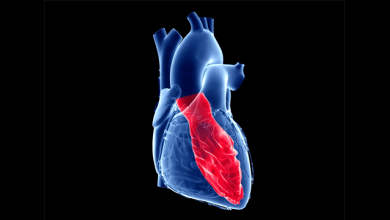Search results
Added:
3 years ago
Dr Phillip S Cuculich (Washington University, St. Louis, MO, US) shares the longer term results from a Phase I/II Study Of EP-guided Noninvasive Cardiac Radioablation for Treatment of Ventricular Tachycardia.
HRS 2020:Recorded remotely from Washington.
Interviewer: Mirjam Boros
Recording editor: Natascha Wienand
Transcript Below:
My name is Phillip Cuculich, and on behalf of my colleagues…
View more
Author(s):
Kenichiro Yamagata
,
Bashar Aldhoon
,
Josef Kautzner
Added:
3 years ago
The number of catheter ablations for atrial fibrillation (AF) treatment has gradually increased over the last 15 years since the first report on the importance of pulmonary vein (PV) foci for triggering AF.1 Catheter ablation for AF is a complex procedure with multiple steps, such as transseptal puncture, mapping of the left atrium and PVs and extensive linear ablation around PV ostia. Not…
View more
Defining LBBB Patterns in CRT
Author(s):
Roderick Tung
,
Gaurav A Upadhyay
Added:
3 years ago
Article
Mapping AF Structural Substrates
Author(s):
Ahmed M Al-Kaisey
,
Ramanathan Parameswaran
,
Jonathan M Kalman
Added:
3 years ago
Article
Author(s):
Tina Baykaner
,
Junaid Zaman
,
Paul J Wang
,
et al
Added:
3 years ago
Treatment of atrial fibrillation (AF) classically focuses on eliminating triggers near and from the pulmonary veins, which may initiate AF. However, the 1–2 year success rate of pulmonary vein isolation (PVI) remains 40–50% for persistent AF1,2 and 50–65% for paroxysmal AF,3–5 while supplementary linear lesions or extensive ablation at electrogram-targets have had disappointing results and may…
View more
Author(s):
Nikolaos Papageorgiou
,
Neil T Srinivasan
Added:
3 years ago
Author(s):
Hongwu Chen
,
Kit Chan
,
Sunny S Po
,
et al
Added:
3 years ago
Ventricular tachycardia (VT) originating from the Purkinje system is the most common type of idiopathic left ventricular tachycardia (ILVT), especially among young Asians.1,2 It usually has a benign course. Research over the past two decades has deepened our understanding of the anatomy of the Purkinje system and the mechanisms of ILVT. This review focuses on the research history and anatomy of…
View more
Author(s):
Amir A Schricker
,
Junaid Zaman
,
Sanjiv M Narayan
Added:
3 years ago
Catheter ablation is more effective than pharmacological therapy for the secondary prevention of patients with paroxysmal1,2 and persistent3,4 atrial fibrillation (AF) and has an emerging role in the primary prevention of paroxysmal AF.5,6 Nevertheless, in randomised clinical trials (RCTs) its success in treating patients with paroxysmal AF is 40–60% for a single procedure and 70% for multiple…
View more
Author(s):
Rakesh Latchamsetty
,
Fred Morady
Added:
3 years ago
Catheter ablation of AF has shown steady growth over the past two decades with a nearly 15 % annual increase in the US.1 This growth can be attributed in large part to four factors: an increase in operators and institutions performing the procedure;2 a steady rise in AF prevalence, which is predicted to reach 12 million in the US by 2030;3 a larger spectrum of AF patients with more complex atrial…
View more
Added:
6 years ago















 « First
« First